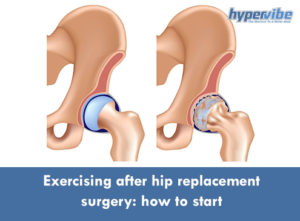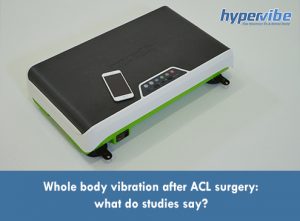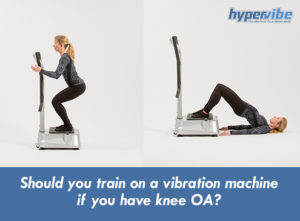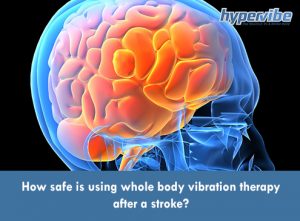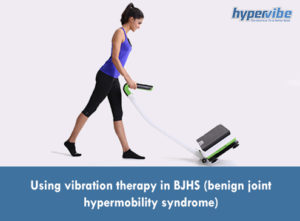Why Vibration Therapy After Knee Replacement Surgery Works
The knee is a complex joint. It helps support body weight and enables engagement in a wide range of movements and activities. The joint is therefore mobile, flexible, strong and resistant. But due to injuries (sprains and tears), overuse or the progression of time, with age and wear and tear, our knee(s) can get damaged, causing trouble, pain and instability. Knee pain can begin as a minor sensation and move up to mild, moderate and severe.
It can also be a result of osteoarthritis (OA) or an inflammation such as bursitis. Knee problems can manifest themselves either as a deformity or a syndrome. If you’ve had knee replacements and you’d like to find out what options you have for a healthier recovery, you may consider vibration therapy after surgery. This post explores the key things you need to know.
Can you use a vibration plate if you have had a knee replacement?
In the case of post-operative knee replacement surgery (arthroplasty), therapy is recommended in many cases to help the knee see a fuller recovery for a wider range of motions, improved use and less pain. As such, opting for vibration therapy is one of the proven ways to achieve these aims.
In fact, numerous research studies have shown a positive correlation between whole-body vibration and knee replacements. Vibration therapy generally involves standing on a vibration platform or a vibration plate as a part of the post-operative recovery process. It may include a range of gentle to more strenuous exercises, depending on your surgeon’s recommendations.
How vibration therapy works
It targets the whole body and the affected knee joint by providing high-frequency, low-amplitude exercise that is performed on a vibration platform. The activity doesn’t place too much stress on the knee joints. In fact, whole-body vibration sends vibration energy waves or pulses throughout the entire body at quick intervals, resulting in muscle movement for around 30 to 50 times a second.
This causes the muscles to reflex and basically does a workout for you by you just standing there. Of course, you can always combine it with other exercises while you’re on the vibration plate, but it’s always advisable to double-check this with your medical practitioner first. In short, it is great for both preventing and treating knee pain.
Our tips for using a vibration plate effectively include:
- Standing on it with knees slightly bent to enable the muscles to absorb the motion and to minimise the impact on the joints
- Standing in light to moderate squats to enable the stimulation to travel past the shoulders
- The deeper your squat, the more challenging the position is – so, always perform this activity in relation to your particular case and ability
- It’s vital to practice proper posture (imagine that you are about to sit down in a chair)
- Distribute your body weight evenly between the left and right sides of your body
- Don’t forget to relax and breathe instead of tensing up and resisting the stimulation.
The benefits of using a vibration platform
There are numerous benefits to using a vibration plate or platform after knee replacements. Some of these, according to research, include:
- It is a safe and convenient alternative to conventional rehabilitation exercises
- Vibration machine movements can speed up the recovery process
- It requires less time than conventional rehabilitation and is more effective
- It helps patients resume the activities of daily living earlier
- Improves pain, swelling, muscle strength, balance, postural stability and functional activity
- Increases the metabolic rate/reduces body weight and decreases lactate accumulation
- Broadens the active range of motion
- It has positive effects on joint positioning, laxity and functioning
- Improves the overall knee function
- It contributes to denser bones and a healthier heart
- It results in faster physical recovery
- Decreases stress levels
- It warms up the joints and stimulates circulation, resulting in a faster delivery of nutrients to the joints
- Balances gait
- Eliminates trauma to sensitive joints and tendons
- It loosens tendons and muscles simultaneously
- It triggers regenerative processes
- It increases growth hormone levels in the body
- It can produce more collagen, essential for joint health
Are vibration machines good for arthritic knees?
Arthritic knees are frequently a cause of the disease osteoarthritis (OA). This happens when the tissue surrounding the bones in joints wears down or gets damaged. Knee cartilage degrades and progressively gets thinner, resulting in pain, stiffness and loss of flexibility because the bones are essentially rubbing against each other.
OA is believed to be the most prevalent form of arthritis, which is a medical condition that is associated with the swelling of the joints. The knee is often the most affected joint.
And now for the all-important question: are vibration machines good for arthritic knees? Studies indicate that this is indeed the case. Vibration training can improve muscle strength and the functioning of joints and reduce pain for people with OA or arthritic knees. This training is considered both effective, safe and a low-impact solution. It is also a dual-purpose type of training. On the one hand, it offers a great workout. On the other, it is good for rehabilitation. It can be done by simply standing on the vibration platform or by combining the vibrations with light exercises. In general, vibration therapy should be done on a regular basis for an extended period of time for greater long-term results.
What you cannot do with knee replacement
Although rehabilitation, therapy and light exercise are all recommended for people who have had knee replacement surgery or who have OA, it is highly recommended that people with these conditions do not engage in activities such as sprinting, running, skiing, playing contact sports, lifting heavy weights and generally avoiding sports that require jerking, twisting, pulling or running.
The reason for this is that these activities are generally considered high-impact and can place undue stress and pressure on the knee joints.
What exercise machines can I use after knee replacement?
It is argued that using vibration therapy after surgery for knee replacements is possibly one of the most potent ways to rejuvenate the knee joints and speed up the recovery process. Exercise machines that place high stress on the knee joints should be avoided.
And as mentioned above, lifting heavy weights and engaging in contact sports should be avoided as well. Activities such as pilates, yoga and swimming can be safer alternatives and accompany the use of a vibration plate as well.
In conclusion
The best part about vibration therapy is that you can use a vibration machine from the comfort and convenience of your own home. It does not require a prescription, although it is highly recommended that you follow a therapy and rehabilitation exercise programme that’s designed by your medical specialist. The bottom line is that vibration therapy helps those with OA or those who have undergone knee replacement surgery. And it is a solution that can offer quicker and more effective results.
Resources:
https://bmcmusculoskeletdisord.biomedcentral.com/articles/10.1186/s12891-020-03599-2
https://lermagazine.com/article/whole-body-vibration-for-knee-osteoarthritis
https://pubmed.ncbi.nlm.nih.gov/35174868/#:~:text=No%20adverse%20events%20were%20reported,in%20individuals%20with%20knee%20OA.
https://www.hindawi.com/journals/bmri/2020/7362069/
https://clinicaltrials.gov/ct2/show/NCT04107350
https://www.ncbi.nlm.nih.gov/pmc/articles/PMC6912668/
https://www.mountsinai.org/health-library/selfcare-instructions/taking-care-of-your-new-knee-joint#:~:text=You%20shouldn’t%20downhill%20ski,%2C%20playing%20tennis%2C%20and%20golfing.






